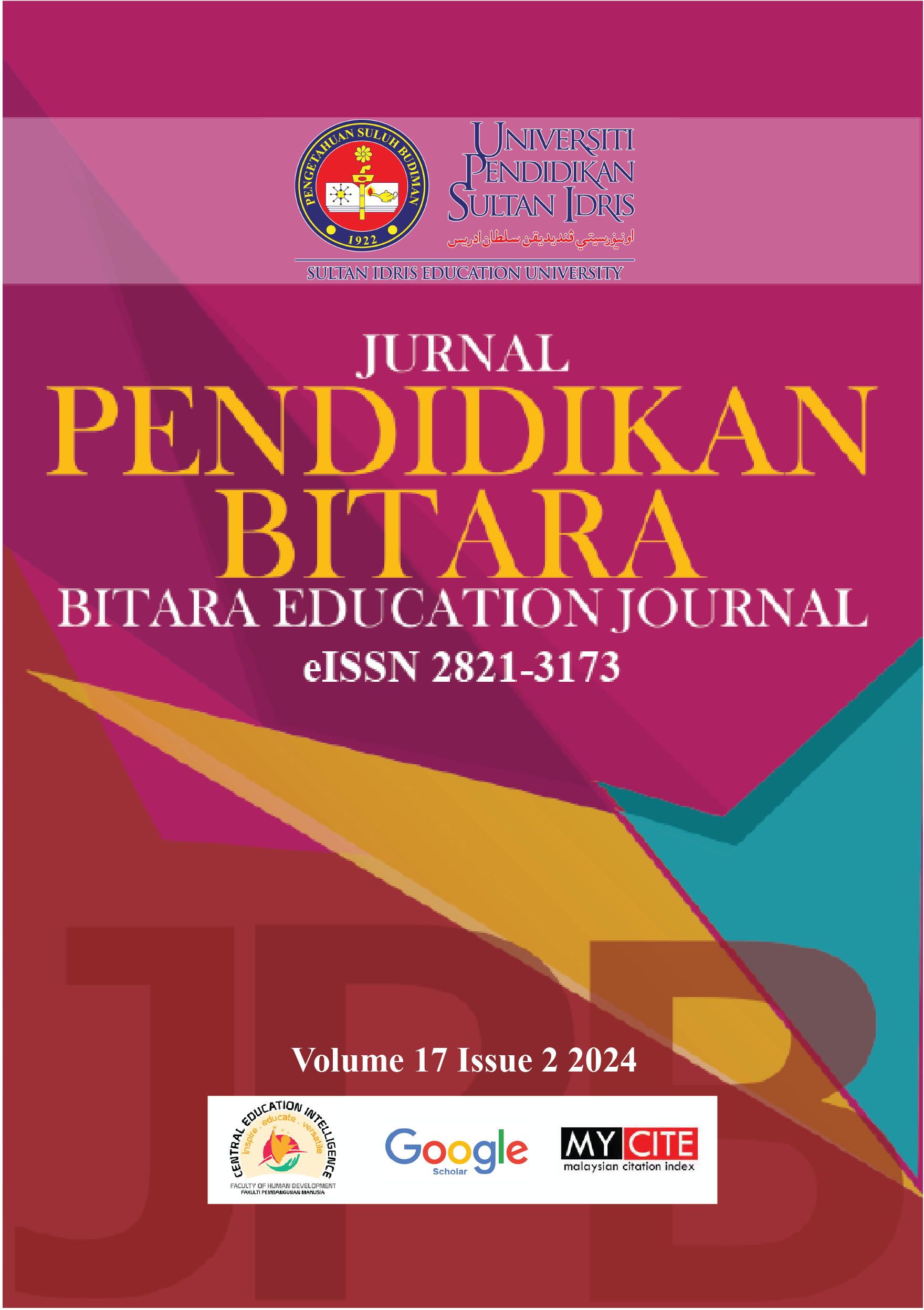Development and Usability of a gaming application “Bio-Stasis” in the learning of Homeostasis and Urinary System of Human among Form 4 Biology Students
DOI:
https://doi.org/10.37134/bitara.vol17.2.2.2024Keywords:
Usability, Biology, gameAbstract
This study aims to develop a Bio-Stasis interactive game for the Homeostasis and Human Urinary System Biology Form 4 topic that has a high validity value and measures the level of applicability of using this application in biology learning for the topic. This study is a development study using a quantitative approach and the ADDIE model and has gone through the validation process. This study also involved biology students in Form 4 at the National Secondary School in the area around Sabak Bernam district, Selangor. The study sample was randomly selected from the same population. The instrument used in the implementation of this study is a questionnaire that covers four constructs, namely the aspect of usefulness, the aspect of user ease of use, the aspect of ease of learning, and the aspect of satisfaction. The data was analyzed through the mean and standard deviation interpretation method using the Statistical Package for Social Science application. The results of the analysis found that the interpretation of the average mean for each construct showed a high value and a low average value of the standard deviation. This shows that the development of the Bio-Stasis application fulfills all four constructs, and the expert validity analysis carried out shows that this application has a high value of validity and thus fulfills both research objectives that have been outlined. The implications of the study as well as suggestions for further research are also discussed. The results of the study show that the Bio-Stasis application is suitable for use as a teaching aid by applying game-based learning.
Downloads
References
Alfalah, S. F. (2018). Perceptions toward adopting virtual reality as a teaching aid in information technology. Education and Information Technologies, 23(6), 2633-2653.
Yahaya, H. A., & Baharudin Arus, I. I. (2016). Menguasai SPSS dengan mudah. UNISSA Press.
Chua, Y. P. (2012). Mastering research methods. Mcgraw-Hill Education.
Phang, F. A., Abu, M. S., Ali, M. B., & Salleh, S. (2014). Faktor penyumbang kepada kemerosotan penyertaan pelajar dalam aliran sains: satu analisis sorotan tesis. Sains Humanika, 2(4).
Razali, F. B., Talib, O. B., & Othman, A. B. (2017). Aplikasi kemahiran proses sains dalam pembelajaran berasaskan masalah untuk mata pelajaran Biologi. JuKu: Jurnal Kurikulum & Pengajaran Asia Pasifik, 4(3), 38-46.
Jayawardana, H. B. A. (2017). Paradigma pembelajaran biologi di era digital. Jurnal Bioedukatika, 5(1), 12-17.
Zion, M., & Klein, S. (2015). Conceptual understanding of homeostasis. International Journal of Biology Education, 4(1), 1-27.
Harun, N., & Ghani, F. A. (2016). Kesahan dan kebolehpercayaan soal selidik amalan belajar pelajar berpencapaian rendah sekolah berasrama penuh. Jurnal Kemanusiaan, 14(3).
Kaimara, P., Fokides, E., Oikonomou, A., & Deliyannis, I. (2021). Potential barriers to the implementation of digital game-based learning in the classroom: Pre-service teachers’ views. Technology, Knowledge and Learning, 26(4), 825-844.
Mustapha, R. B. (1999). The role of vocational and technical education in the industrialization of Malaysia as perceived by educators and employers. Purdue University.
Riduwan, R. (2012). Skala Pengukuran Variable-variabel. Cetakan 12. Penelitian.
Salleh, M., Khairani, M. Z., & Rafee, Y. M. (2023). Validity and Reliability of a Needs Analysis Questionnaire Instrument for The Development of DiD-Art Applications for Drawing Art in Secondary Schools: Kesahan dan Kebolehpercayaan Instrumen Soal Selidik Analisis Keperluan Pembangunan Aplikasi DiD-ART Untuk Seni Lukisan di Sekolah Menengah. KUPAS SENI, 11(1), 16-21.
Samur, Y. (2019). Kes Sesi: A mobile game designed to improve kindergarteners' recognition of letter sounds. Journal of Computer Assisted Learning, 35(2), 294-304.
Downloads
Published
Issue
Section
License
Copyright (c) 2024 Amir Azman Md Arshad, Marina Mokhtar, Hakimi Kassim

This work is licensed under a Creative Commons Attribution-NonCommercial-ShareAlike 4.0 International License.





